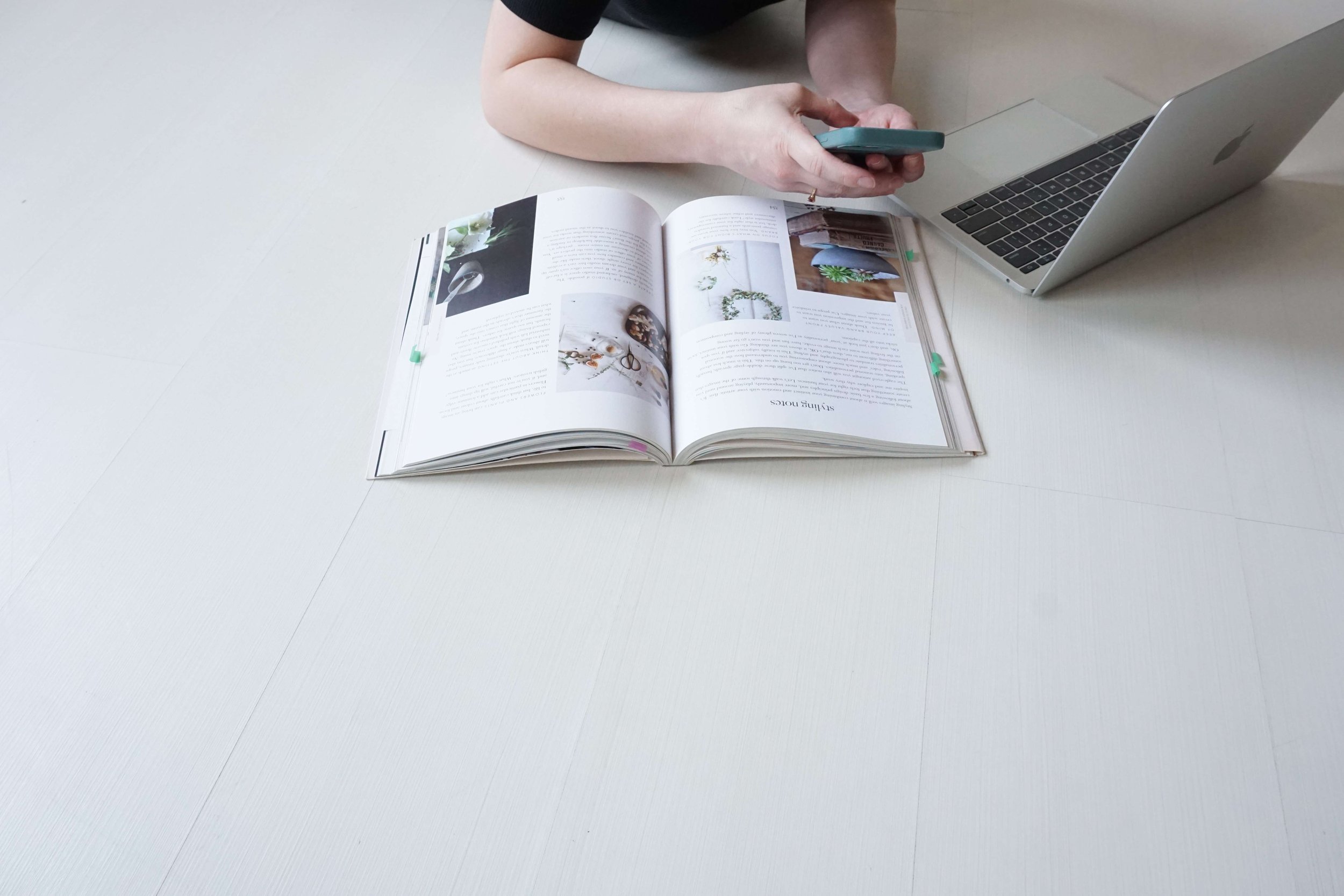Seven Tips for Building Your First Website
When you arrive on the Squarespace homepage, you see their tagline that says, “A website makes it real”. Do you have your own business, side hustle, hobby, or creative passion that you are ready to “make real” with a website? After all, it’s really hard to generate a profit if no one can see your work or what you’re all about!
Designing a new website can be intimidating. Even after being a web designer for a couple of years I still have moments where a new project feels like a huge endeavor. That’s why I have organized my process into SEVEN bite sized chunks that make strategizing for your new website just a bit easier. Maybe they will help you too!
One: Know why you want a website.
What is the goal?
What are you planning to accomplish by having a new website?
When your website is complete, how will you plan to market yourself?
Asking yourself these important questions will help you determine what your site needs, get the ball rolling on imagining the kind of clients you want to attract, and implementing a strong strategy.
Two: Who are your clients?
What kind of customers will benefit from what you do?
Who will resonate most with your product, words, service, or art?
Do you solve a problem for a certain population?
The amazing news is that all of the customers you are looking for are looking for you too! Your website will help you get the word out.
*Helpful note: Stay open to possibilities. It can take some time to determine who you target audience is. Keep your eyes peeled because you might be surprised by the type of niche you are able to discover and create!
Three: Use your demographic information to build a brand.
Once you have those previous questions answered (and you really understand your ideal clients), then you can create/fine tune your brand.
MOST IMPORTANT: What are my client’s main pain points? Ask yourself why they are seeking your service in the first place and cater to those needs. Without thinking about your clients and the ways that you can make their lives better, let’s be real, business growth is limited. First and foremost showing up to serve.
What vibe resonates with my audience?
What information and messaging will they appreciate?
How do they communicate and what style of language do they use? (e.g. clever, straightforward, classic, sleek?)
What color scheme/styling will clients find the most appealing?
Use these answers to put together a brandboard and outline of your brand voice and style.
*Helpful note: Follow other brands and notice how they manage their style. Create a pinterest board with schemes, patterns, marks, and design elements that reflect your brand. Use that to keep you on track and inspired while designing.
Four: Choose 4-5 items to include in your main navigation.
Recall the main purpose of your website. Was it to sell a product or service? Position yourself as an expert through blogging? Provide important information? Subscribe to your email list? Include this goal in your main navigation with 3-4 other supporting goals you have for your website.
Minimize this as much as possible to avoid visitor overwhelm or confusion! If you are truly focused on solving problems for others and showing up in service, make it easy for people to get that help. Make it easy for them to see what your all about. Make it easy for clients to pay you. Less is more.
Five: Draw a wireframe.
A wireframe is the skeleton. outline, or blueprint of your website. Now that you know which pages you are going to have. You can draw out how you want your site to be organized.
Consider the biggest priority and information that is the most important. ALWAYS keep in mind user experience. Provide information where it makes sense and keep everything else clean and concise.
Six: Start playing with a platform.
The more you explore a design platform, the better off you’ll be, but be prepared to invest A LOT of time if you are building a website yourself. New skills need time to develop, but it can certainly be done with some playtime and research.
Need help choosing where to work? Look into the pros and cons of design platforms. My personal favorite is Squarespace. Blog coming soon about why Squarespace is my #1 choice for new businesses.
If your website has big goals, requires a lot of unique functions, or is just going to be really big, consider hiring a designer to support you!
Seventh and most important tip: Take messy action
I don’t remember which mentor of mine said this but I want to share it with you. “No one knows what your version of perfect is”. You and you alone are the one that sets the standard or creates the story that it’s never good enough.
Don’t get me wrong, as a recovering perfectionist I totally understand it. One second your getting ready to launch and 5 hours later of tweaking you find yourself scrapping the whole project with the intention of starting again.
I think a website is important because it shows the world what you are up to AND gives you a way to get paid. BUT. It is certainly not the most important thing. That’s pretty taboo coming from a web designer but it’s truly what I believe. If your website is keeping you from launching your business, remind yourself that messy action is better than no action. The best thing you can do it just start.






